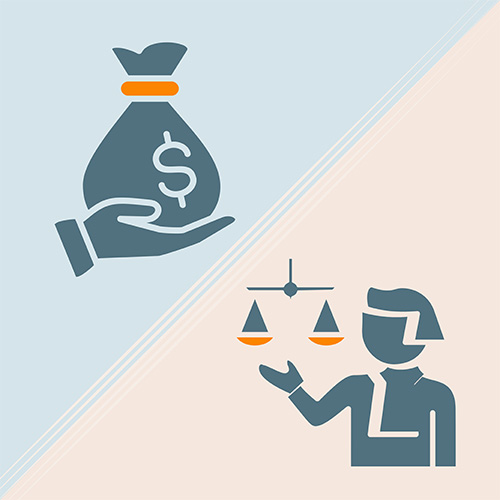Tucker Poling, JD
General Counsel and Vice President of Claims

In past issues of Vital Sounds, we discussed the societal costs of excessive and increasing tort litigation and examined tort reform efforts in Kansas. In this issue, we highlight a recent legislative trend that may heighten liability risks for healthcare providers.
Many are fatigued by the level of political polarization today, but now healthcare providers are drawn into courtroom battles over controversial public policy debates.
Here’s your brief on this emerging potential liability risk:
What’s the issue?
- There’s been a recent trend in state legislatures to create new private causes of action against healthcare providers (in other words, new forms of civil lawsuits that individuals can file seeking money damage awards from healthcare providers) as a tool to enforce governmental public policy preferences, particularly in the context of polarized political issues.
- For example, in 2024, Kansas lawmakers introduced three bills that would have created new legal grounds for suing healthcare providers, each dealing with polarized political topics such as gender issues, abortion issues, and vaccine issues.
- The liability concern here is with the enforcement mechanism, not the underlying political or ideological issues. It’s not about taking sides on policy—it’s about the legislative tool used to create new professional liabilities for healthcare providers.
Why is this a potential liability risk for healthcare providers?
- Healthcare providers risk being drawn into polarized political issues, which could threaten their personal financial assets and professional livelihoods.
- Enforcement mechanisms that rely on private civil causes of action against healthcare providers shift the burden and costs of enforcement of governmental policy onto providers and patients and tend to evade constitutional limits on government enforcement actions against healthcare providers.
- Often, these new private causes of action are not covered by existing malpractice insurance coverage. Further, recent legislative proposals seeking to create these new forms of lawsuits have directly prohibited liability insurance companies from covering these lawsuits. This means that, even if the case is meritless, a provider could be placed in the position of having to spend staggering amounts of their own money just to defend themselves against the lawsuit.
- This tends to further empower the plaintiffs’ civil litigation industry, which has been estimated to drain $50 and $150 billion from the American healthcare system annually.
Why could empowering the Plaintiffs’ civil litigation industry as a governmental enforcement tool pose a potential long-term liability concern?
- The civil litigation system creates economic incentives that can result in excessive, costly, and abusive litigation, which disproportionately benefits the contingency fee litigation industry at the expense of patients and providers.
- The civil litigation industry is driven by contingency fee attorneys, who routinely retain 35-65% of the money awarded to their clients and promote litigation by spending billions in direct advertising.
- The rise of third-party litigation funding, in which private equity investors fuel the plaintiffs’ civil litigation industry, heightens the concern.
We’ll continue to track these legislative trends to keep our members informed of potential liability risks impacting healthcare providers.
